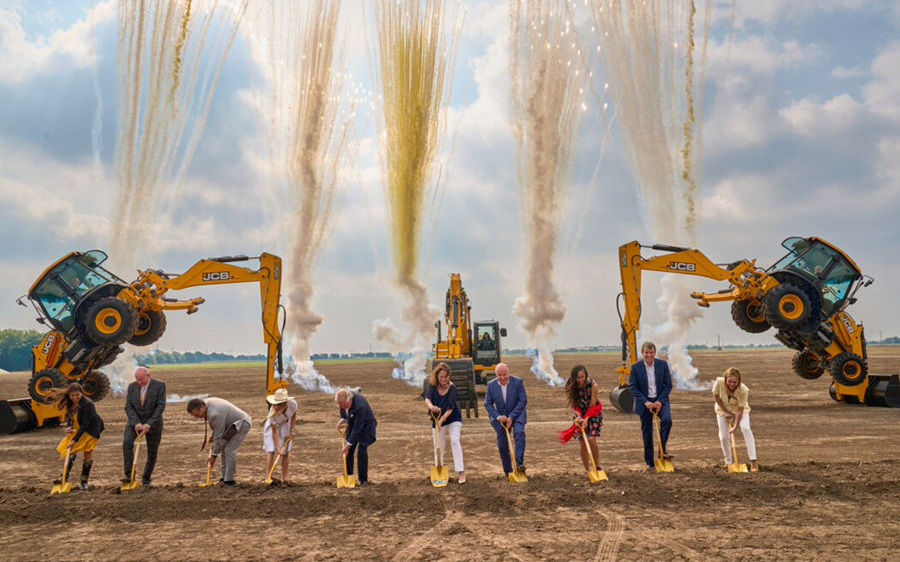MARKET SNAPSHOT
$1,260 3Q 2024
90.0% 3Q 2024
2,867 [YTD: 6,003]
-2.0% 3Q 2024
-40 BASIS POINTS
4,681 [YTD: 10,980]
New multifamily unit deliveries in 2024 will mark the highest in over three decades, but relief is expected in 2025, with completions dropping to 4,700, in line with the pre-pandemic average.
Despite new supply outpacing demand, leasing activity has remained strong through the first three quarters of 2024, helping to offset further weakening of local market fundamentals.
The long-term outlook for San Antonio’s multifamily market remains positive, driven by employment growth, rising wages, and the continued strength of key economic sectors such as healthcare, government, and aerospace.
2,867 UNITS
[YTD: 6,003]
San Antonio’s leasing activity remained robust in the third quarter of 2024, although absorption lagged slightly behind new unit deliveries. Renters absorbed over 2,800 units during the quarter, adding to the 3,100 units absorbed in the first half of the year. The summer leasing season spurred strong demand in the Northwest and Far West submarkets, which collectively accounted for 50% of the market-wide absorption in Q3. Notably, only five of the city’s 17 submarkets reported negative absorption, underscoring the market’s overall resilience.
4,681 UNITS
[YTD: 10,980]
2024 is shaping up to be an outlier year for apartment completions in the San Antonio market. By the end of the third quarter, 11,000 units had already been completed, with an additional 2,300 units set for delivery in the fourth quarter, bringing the annual total to 13,300—the highest level of deliveries in over three decades by a wide margin. While this influx has placed considerable supply-side pressure on stabilized multifamily properties, there is relief in sight for owners and operators. In 2025, the number of completed units is expected to drop to 4,700, aligning more closely with the pre-pandemic average from 2014 to 2019.
Inventory increased by 5.7% over the past year, leading to a 40-basis point decline in the average occupancy rate to 90.0%. However, there are signs of stabilization, with occupancy rates holding steady between the second and third quarters of this year. Notably, 9 of 17 submarkets reported occupancy rates above the market average, with Bandera County surpassing 95% and North Central San Antonio recording the largest annual gain of 2.1%. Looking ahead, continued economic momentum is expected to support the multifamily market. Multifamily construction starts returned to pre-pandemic levels in the first half of 2024, indicating a slowdown in new deliveries by 2025. This trend suggests a more balanced market as supply and demand align more closely moving into 2025.
While demand in San Antonio’s apartment market has grown significantly in 2024, the influx of new units delivered in a short time frame has put pressure on rents, leading to a 2.0% year-over-year decline in Q3 2024—the fourth consecutive quarter of negative rent growth. However, rent performance improved on a quarterly basis, with a modest 20-basis point decline, down from a 110-basis point drop in the previous quarter. As new developments, particularly luxury communities in high-demand areas, enter the market, competition among properties is intensifying. Stabilized properties are responding with rent concessions and competitive pricing, while aggressive leasing incentives, such as multiple weeks of free rent, are becoming increasingly common, especially in newly constructed projects.
San Antonio, TX maintained strong economic growth in August 2024, adding 26,700 jobs, a 2.3% year-over-year increase, according to the Bureau of Labor Statistics (BLS). The government sector led job creation with 10,200 new positions, reflecting a 5.8% rise, followed by the Education and Health Services industry, which grew by 3.7% with the addition of 6,600 jobs. The city’s unemployment rate held steady at 4.2%, aligning with the national average.
August 2024 ANNUAL JOBS CREATED
AUGUST 2024 EMPLOYMENT GROWTH
AUGUST 2024 Unemployment rate
4.2% us August rate
Nominal Change
from August 2023
to August 2024: 10,200
Percent Change: 5.8%
Nominal Change
from August 2023
to August 2024: 6,600
Percent Change: 3.7%
Nominal Change
from August 2023
to August 2024: 2,800
Percent Change: 4.6%
Nominal Change
from August 2023
to August 2024: 2,300
Percent Change: 3.2%
Nominal Change
from August 2023
to August 2024: 2,300
Percent Change: 1.6%
| Sector | Nominal Change from August 2023 to August 2024 | Percent Change |
|---|---|---|
| Government | 10,200 | 5.8% |
| Education and Health Services | 6,600 | 3.7% |
| Manufacturing | 2,800 | 4.6% |
| Mining, Logging, and Construction | 2,300 | 3.2% |
| Leisure and Hospitality | 2,300 | 1.6% |
| Trade, Transportation, and Utilities | 1,400 | 0.7% |
| Other Services | 1,400 | 3.4% |
| Financial Activities | 1,000 | 1.0% |
| Professional and Business Services | -300 | -0.2% |
| Information | -600 | -3.4% |

The San Antonio International Airport is embarking on a 20-year expansion project that includes new terminals and updated facilities designed to accommodate a growing influx
of visitors.

Toyota recently announced a plan to build a new axle production facility in San Antonio, which will create more than 400 new, high-quality jobs.

Construction equipment manufacturer, JCB, has begun construction of a 720,000-square feet production facility on a 400-acre site in San Antonio, TX. The facility is set to begin production in 2026.
San Antonio’s multifamily market experienced a construction boom following a surge in population growth and low interest rates. However, the market’s capacity to absorb this influx of units has been tested. As of September 2024, nearly 8,700 units were under development, with 5,100 slated for completion within the next year. This oversupply is expected to place downward pressure on rents until mid-2025. Despite these short-term challenges, the long-term outlook remains positive. Construction starts have adjusted to historical averages, signaling a rebalancing by 2025, with rental growth projected to return to positive territory next year. The market’s future prospects are bolstered by strong employment growth, rising wages, and the continued strength of key sectors such as healthcare, government, military, and aerospace manufacturing.
Sources: Costar; ESRI; U.S. Census Bureau; Yardi Matrix; U.S. Bureau of Labor Statistics












